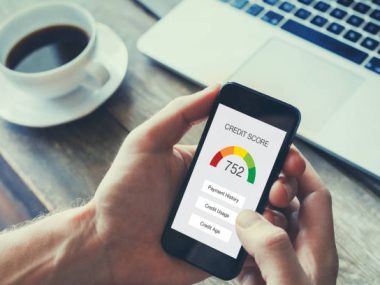College debt relief has become a focal point of conversation among graduates, educators, and policymakers alike. With college tuition at an all-time high, many students are saddled with substantial debt upon exiting their alma maters’ hallowed halls.
In this comprehensive article, we’ll dissect the enigma surrounding college debt relief, exploring the lifelines extended to beleaguered borrowers striving to recover from the financial burdens incurred in pursuit of higher education.
What is College Debt Relief?
College debt relief constitutes a beacon of hope for those mired in the quagmire of student loans. Understanding the nature of this assistance is the first step toward financial recuperation.
College debt relief can manifest in various forms, with the prime objective being to alleviate the overwhelming weight of loans taken on by students. Diving into this concept, we encounter several mechanisms crafted to ease this burden:
Forgiveness Programs: Initiatives like Public Service Loan Forgiveness (PSLF) offer absolution for borrowers engaged in particular public service occupations who meet stringent requirements.
Income-Driven Repayment Plans: These plans scale monthly payments in parallel with the borrower’s income and family size, potentially culminating in loan forgiveness following two to two and a half decades of payments.
Refinancing Options: Securing a lower interest rate through refinancing can transform a mountain of debt into a manageable hillock, allowing graduates to save money or extinguish their loans more briskly.
Understanding these strategies is paramount for embattled students seeking emancipation from the financial chains of student loans.
Step Into the World of Relief
Delving deeper into the realm of college debt relief, let’s explore the cornerstone elements that define this avenue of support:
Public Service Loan Forgiveness: Tailored for those who dedicate their careers to serving the public, this program requires careful adherence to its eligibility rules, and with the right combination of job type and repayment plan, leads to the remission of the remaining loan balance after a decade of service.
Income-Driven Plans: Intertwining one’s financial earnings with their repayment obligations, they are designed as a breath of relief for those whose debts dwarf their wallets.
Refinancing Student Loans: Like reinventing one’s financial narrative, refinancing enables you to snag a potentially lower interest rate, significantly reducing lifetime payment totals.
To encapsulate, college debt relief is a multifaceted toolset designed to assist graduates in navigating the turbulent seas of student debt.
Who Qualifies for College Debt Relief Programs?
Eligibility for college debt relief is not a one-size-fits-all criteria—it is a tapestry woven with various threads. Often, it is the federal loan borrowers who find their names on the guest list for these programs, while private loan bearers might observe from outside the panes:
Financial Need and Income-Based Requirements: The cry for financial relief must resonate with the nature of hardship and the whisper of income thresholds that define the capacity to repay.
Professionals with a Heart for Service: Those in public service or teaching may find themselves at a crossroads where serving others meets serving oneself through loan forgiveness after a committed tenure.
Unexpected School Closures: When educational institutions shutter unexpectedly or engage in unsavory practices, affected students may find a silver lining in loan discharge opportunities.
Commitment to Paying it Forward: Graduates who adhere to income-driven repayment schedules may eventually bask in the glow of loan forgiveness after a score or a quarter of a century making regular payments.
Deciphering the Eligibility Enigma
Digging into the labyrinthine provisions of college debt relief eligibility, one uncovers a repertoire of conditions:
Borrower’s Status: Your current standing with federal student loans opens doors to different relief pathways.
Career Path: Aligning your occupation with sectors deemed worthy of debt forgiveness by the very nature of their societal contributions can reap rewarding benefits.
Adverse Educational Experiences: Having suffered at the hands of your institution’s closure or deceit molds you into an eligible candidate for specific loan discharge scenarios.
Long-Term Affordability: Making consistent payments under income-driven plans positions you as a contender for the ultimate prize—nullification of your remaining debt.
Each qualifier interlocks with the next, creating a mosaic that, when viewed in its entirety, depicts who is favored by the gods of college debt relief.
How Can I Apply for College Debt Relief?
Embarking on the journey towards college debt relief might feel akin to navigating a maze. Yet, with methodical steps, the path can become clear:
1. Eligibility Assessment: The quest begins by determining your qualification status vis-à-vis the debt relief programs available.
2. Documentation Assembly: Like gathering tools for a voyage, assemble all economic, loan, and personal documentation required.
3. Program Selection: Investigate and choose the most appropriate debt relief vessel to carry you towards financial sovereignty.
4. Application Protocol: Fill out applications precisely, whether online or via traditional mail.
5. Application Pursuance: Diligently keep track of your application’s expedition and liaise with loan servicers to navigate any stormy weather promptly.
Charting the Application Course
Steering through the application process involves a detailed map of tasks:
- Gauge Your Qualifications: Like checking the weather before setting sail, ensure you meet the criteria for aid.
- Collect Necessary Provisions: Statements, tax forms, and paperwork are the provisions for your journey.
- Choose Your Route: Much as captains select the most favourable seas, pick the debt relief program that aligns with your circumstances.
- Embark with Accuracy: Application errors are like navigational mistakes—they can set you off course.
- Stay the Course: Tenacious follow-ups are the equivalent of keeping a steady hand on the tiller.
Remember, the application process is not a tempest to weather alone; assistance from loan servicers and financial advisors can be the guiding stars leading to solvency.
Are There Any Income Requirements for College Debt Relief Assistance?
Income requirements form one of the pillars of eligibility for college debt relief, ensuring that the umbrella of assistance extends to those for whom the rain of financial obligations falls heaviest:
Income Caps: Just as a bridge has a weight limit, debt relief programs often set income caps, beyond which the bridge to relief is inaccessible.
Verification of Income: In the world of debt relief, your tax return is the document that secures your crossing – it proves your income level and need for aid.
Adaptive Payment Scales: Income-driven repayment plans are akin to adjustable seat belts, tightening or loosening to fit the passenger – ensuring their financial safety.
The Financial Threshold of Relief
Scrutinizing the income criteria, we observe integral components of this structure:
- Low-to-Moderate Income Focus: The target of many relief programs is those who find themselves caught between earning too much for aid and too little to repay comfortably.
- Income Ceiling: Annual receipts can usher you through the gate or bar your way entirely.
- Proof of Earnings: Tax returns paint a picture for loan servicers; they are the canvas upon which your financial story is told.
- Payment Adjustments: Your income dictates the tempo of your debt payments, moving to a rhythm that you can sustain.
- Eligibility is partially weaved by the yarn of income, creating a tapestry that delineates who shall receive the mantle of college debt relief.
What Types of Loans are Eligible for College Debt Relief Measures? The seas of college debt relief are navigable chiefly for vessels with the federal flag, yet there’s a myriad of loan types adrift in these waters:
Federally Sanctioned Loans: Direct Loans, FFEL, and Perkins Loans are vessels recognized and protected by the umbrella of federal relief measures.
Private Loan Exceptions: Private loans are akin to boats that must weather the storm without the harbor’s protection, save for the occasional compassionate lender extending a lifeline.
Parent PLUS Loans: These loans, like family yachts, are often included in the federal relief flotilla.
Subsidized and Unsubsidized Loans: Regardless of the wealth of your cargo (financial need) at departure, both these are welcome to anchor in the harbour of debt relief.
Consolidated Loans: The maritime adventurers who merge their fleet into one ship must consult the annals to ascertain whether relief is within their reach.
Loan Types: Charting Your Relief Eligibility
Understanding which of your loans are qualified for relief measures is akin to knowing which of your holdings bear fruit:
Federal Protections: These loans are akin to houses under national heritage protection, eligible for restoration funding.
Private Loan Provisions: Occasionally, generous private lenders may offer a refurbishment grant of their own accord.
Parent PLUS Eligibilities: Similar to insurance policies that extend to family members, these loans are often included in relief considerations.
Need-Blind Assistance: Relief does not discriminate between subsidized or unsubsidized loans, extending its hand to all.
Merged Loan Navigation: When consolidated, a ship’s log—detailing the types of loans and when they joined forces—becomes crucial in soliciting aid.
In the expansive atlas of college debt, varying loan types are charted with different symbols, each with its own markers indicating eligibility for debt relief.
Sailing Towards Financial Liberation
In navigating the intricate channels of college debt relief, one must be both captain and cartographer – charting a course through eligibility criteria, program selection, application processes, income requirements, and understanding the distinct classifications of loans.
The voyage, though daunting, leads to the potential safe harbour of reduced or forgiven debt, allowing graduates to set sail toward their personal and professional aspirations unencumbered by the albatross of loans.
We encourage all seekers of solvency to hoist their sails and harness the winds of available debt relief measures, ensuring that their educational odyssey culminates in the fulfillment of their most cherished ambitions.
Please Help Share This Post









